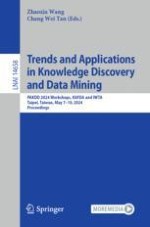2024 | Buch
Trends and Applications in Knowledge Discovery and Data Mining
PAKDD 2024 Workshops, RAFDA and IWTA, Taipei, Taiwan, May 7–10, 2024, Proceedings
herausgegeben von: Zhaoxia Wang, Chang Wei Tan
Verlag: Springer Nature Singapore
Buchreihe : Lecture Notes in Computer Science
